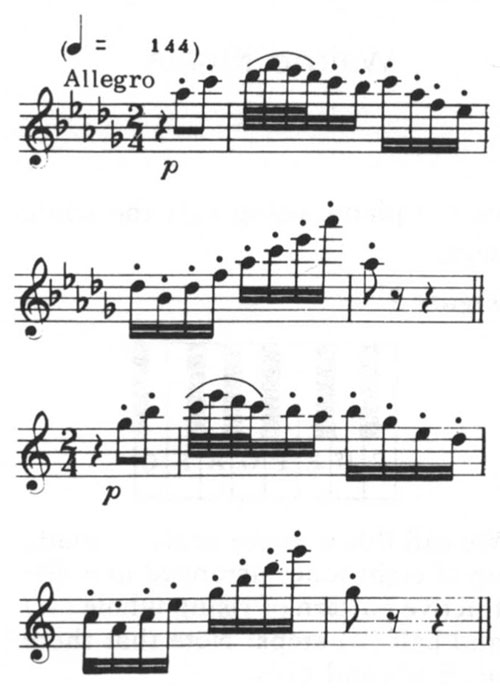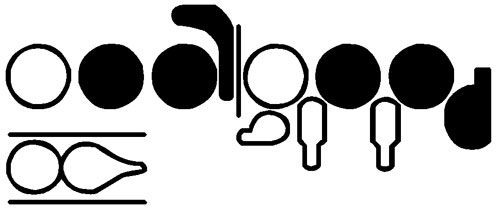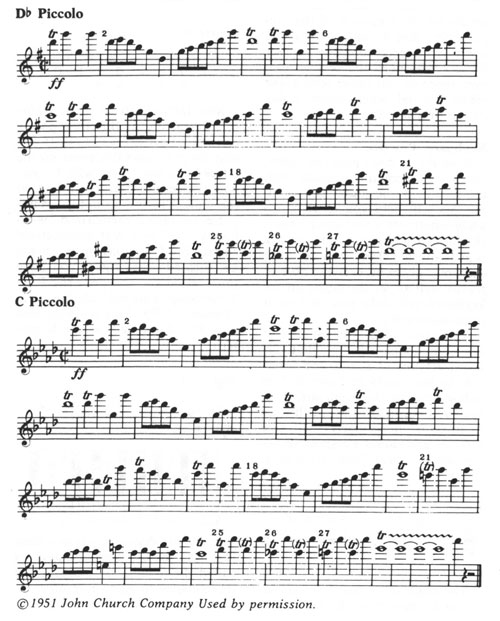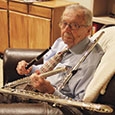From the June 1972 issue of The Instrumentalist
In logging well over a thousand parades and concerts as a young bandsman in school and the service, I honestly don’t know how I would have coped without my Db piccolo. First, it saved me from an otherwise unvaried diet of Eb, Ab, and Db major; second, I gained a most welcome reprieve from that tortuous, temperamental high Ab, the bane of most piccoloists.
Assigning the most amenable key signatures for the majority block of Bb and Eb instruments has long been traditional in band music, and accounts for the overuse of the flat keys for the hapless C instruments. Thus, when the trumpets and clarinets are playing in F major, the flutes are in Eb. Bb major for the trumpets and clarinets is Ab for the flutes, and so on. Consequently, the C instruments are seldom allowed to venture into sharp territory, for this puts a burden on the others by adding two or three sharps to their signatures.
Faced with such a negative flat bias, the only way the piccoloist can enjoy a more reasonably balanced group of key signatures is to switch to a Db instrument (which is, in fact, one reason it was originally introduced into the band). One flat for the trumpet then translates into two sharps for the piccolo, two flats into one sharp, three flats into natural, and so on.
The piccolo solo in The Stars and Stripes Forever is a perfect example. The C piccolo plays in Ab major, requiring the use of the G# key for 46 of the 121 printed notes. The Db piccolo, on the other hand, plays in the key of G, and only two of the 121 notes need the G# key. The left hand technique becomes smoother, permitting a crisper and more brilliant execution of the opening trills and a big reduction in the number of contrary and cross-fingering movements throughout the solo. In addition, with the replacement of the harsh sounding high Ab by G, these important top notes gain more stability and better tuning and quality. This is especially important when the entire piccolo section plays the solo in unison. The orchestral version of Stars and Stripes, by the way, is in the concert key of G, favoring the C piccolo by making its part identical to that of the Db, piccolo in the band.
Speaking of orchestral keys, there also happen to be some C piccolo passages in the symphonic literature that can be played more advantageously on the Db instrument. The most famous one is the solo in the Scherzo (third movement) of the Tchaikovsky Fourth Symphony. Transposing it down a half-step from Db major to C major for the Db piccolo improves its lay at least 100%. I have had much success with that version since 1958, when I first played it with the Chicago Symphony. It is still difficult enough in C major, but at least the fingerings have a more logical flow. The crucial F to Eb fingering change in the 32nd note group, for example, is simplified to E going to D, and that strangely empty feeling in the fingers when playing open Db is replaced by a confident first finger on C natural.

Suggestions for performing the Stars and Stripes solo:
1. If you have only a C piccolo, remember that you can improve the sound and response of the high Ab by adding the second and third fingers of the right hand to the regular fingering:

It is a more complicated fingering, but well worth the trouble to learn. I use it almost exclusively for high Abs, even for most fast passages.
2. It is customary to add trills to the third quarter notes in bars 25 through 27 – shown here in parentheses. These are not in the printed parts.
3. The trill sign over the first note of bar 21 is missing in the standard published C piccolo part.
4. In bars 2, 6, and 18 you can use the trill fingering for the second eighth note.
5. All the quarter and eighth notes in the solo should be played with a crisp staccato, and apropos of this style, all the quarter note trills are played with just one quick accented trill (like a mordent). Naturally, all of the eighth notes are double tongued.
6. Memorize it!







